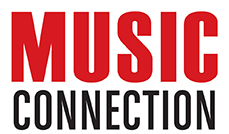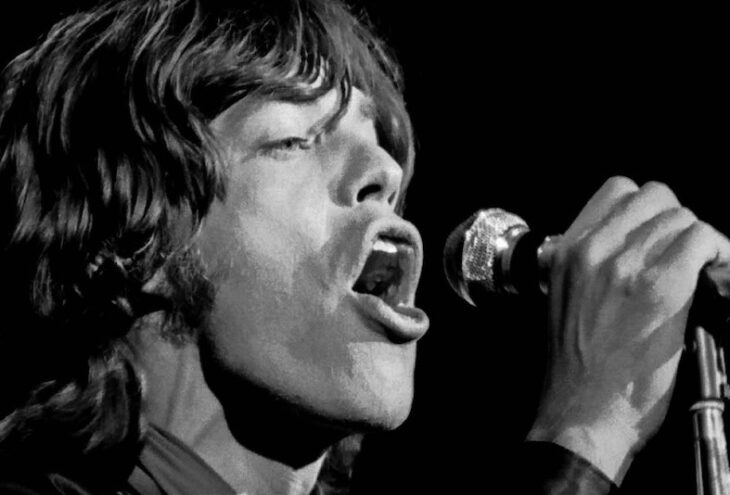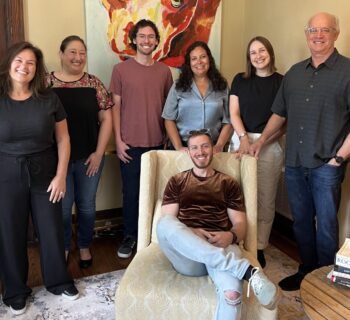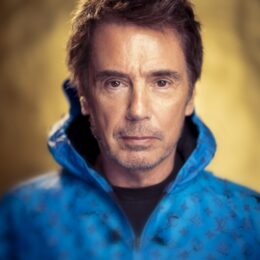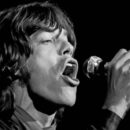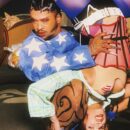In November 1969 the Rolling Stones toured the United States for the first time in three years. Gone was founder member Brian Jones, replaced by Mick Taylor from John Mayall’s Bluesbreakers. Gone too were the Top Ten-laden 30-minute sets played over inadequate PA systems to crowds of screaming, teenagers.
In their place was a fully-fledged 75-minute rock show drawing heavily on the albums Beggar’s Banquet and Let It Bleed, using lighting and theatrics rock audiences had never witnessed before. Terry Reid, B.B. King and Ike & Tina Turner were the opening acts.
The Rolling Stones rocked across America with a tour whose essence is captured in the live album Get Yet Ya-Ya’s Out! heralded by many as the finest live rock album of all time.
Is Everybody Ready For The Next Band? - A People’s History Of the Rolling Stones 1969 US Tour byRichard Houghton mixes contemporaneous press reports with previously unpublished first-hand accounts of the Rolling Stones on their 24-date US tour that has gone down in history as the template that others then followed. From an un-publicized opening night in Fort Collins, Colorado through to the reported events at Altamont, California a month later, this is the story of one of the most infamous rock tours of all time in the words of more than 130 people who were there. November 2025 marks the 56th anniversary of 1969’s Rolling Stones trek. Is Everybody Ready For The Next Band? - A People’s History Of the Rolling Stones 1969 US Tour is scheduled for publication in November 2025 by Spenwood Books.
The Rolling Stones’ November 1969 concerts at Madison Square Garden yielded the 1970 monumental Get Yer Ya-Ya’s Out! the band’s definitive live album. It was produced by the Rolling Stones and Glyn Johns.
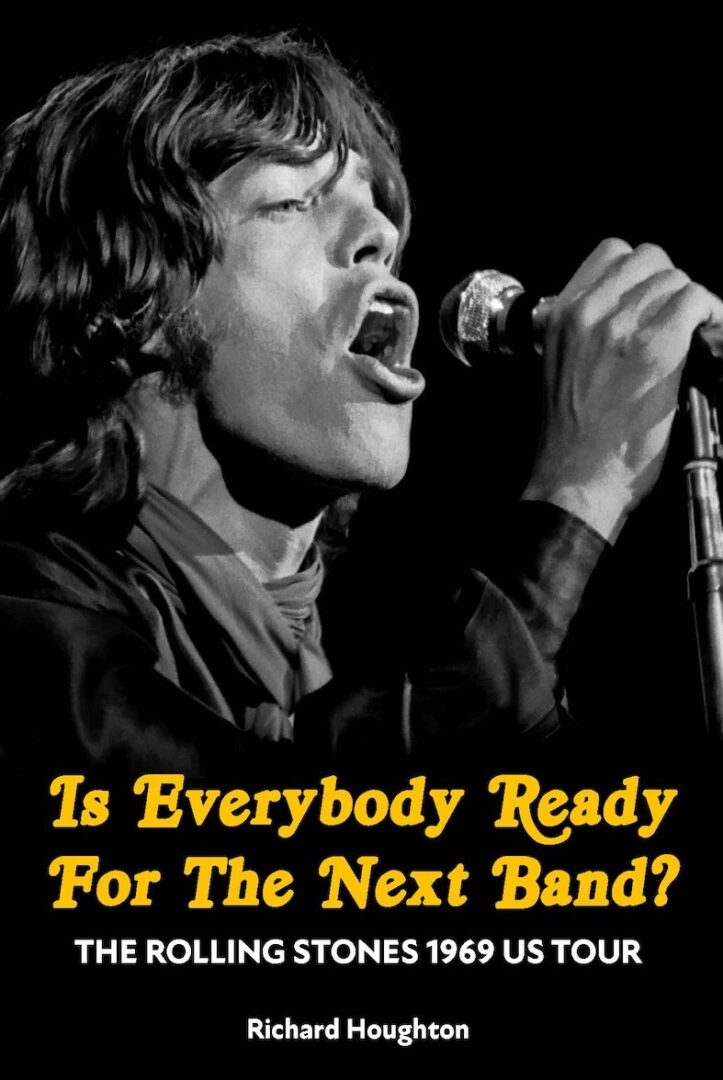
In my October 11, 1975 interview with Tina Turner in the now defunct Melody Maker, she reflected on the Rolling Stones and the 1969 United States expedition with them.
“We toured for years with all the English groups and I always liked what they were singing about. The biggest change started happening when we were working around L.A. in 1966 and ran into Phil Spector,” she remembered. “He wanted to record me and when we cut 'River Deep, Mountain High.' Mick Jagger, who was visiting Phil at the time, was in the recording studio.
"After hearing the song, he wanted us to tour England in 1966 with the Rolling Stones. The English weren't used to seeing girls with high-heeled shows and I think they were shocked a bit,” Tina smiled at Chasen’s restaurant in Beverly Hills.
“River Deep, Mountain High” also impressed Mick Jagger.
Turner in 1966 at Colston Hall in Bristol, England in a hallway corridor taught Jagger an interpretation of the sideways pony dance right in front of Marianne Faithfull, Brian Jones, and Keith Richards.
In our 1975 interview, Tina further reminisced, “After hearing the song he wanted us to tour England in 1966 with the Rolling Stones. The English weren't used to seeing girls with high-heeled shoes and I think they were shocked a bit.”
For B.B. King, his one-month November 1969 spot on the Stones shows was career altering. King’s "Paying the Cost to Be the Boss” was a top 10 R&B hit in 1968 and popular in L.A. I heard it regularly on KGFJ-AM. Then he got booked on the Stones’ 1969 dates.
On November 8th in ‘69 at the Forum in Inglewood California B.B. was now playing in front of more paying folks, music reviewers, rack jobbers, and both AM and FM radio deejays in those arenas then he had ever reached before. It was evident King knew his next half century calendar dates were taken care of.
I had already seen both B.B. King and the Ike & Tina Turner Revue in Watts and around Hollywood as a teenager. B.B. resided in our neighborhood when my family lived in Crenshaw Village. There he was playing on stage with the Rolling Stones in nearby Inglewood! Followed by Ike & Tina who resided locally in the Baldwin Hills View Park area, close to the Forum.
“The Stones were a better live band then any other band at that time,” explained Bill Wyman, bass player of the Rolling Stones in a 2004 interview we conducted.
“The band was great live always. I’m not saying they were the greatest songwriters or the greatest recording artists, but they were the best live band wherever you went. You could go up on stage and blow everybody away no matter who they were.”
What did Wyman think contributed to the live concert dynamic of the Rolling Stones, besides the obvious chemistry the group members had together?
“Practice. Doin’ them little clubs in the beginning,” he emphasized. “Going through all of that learning process, that apprenticeship. Starting off not thinking about being rich and famous and having a career and making a record or going on TV or touring America. Or going out in a limousine like kids think now when they go into a band. None of that. It was let’s play this music and if people like it, that’s a bonus. And if we got a bit of change in our pockets, that was a bigger bonus. And it was that simple.
“I always thought…As long as me and Charlie could get it together, then the rest of the band could do what they’d like and it worked. And that’s what happened in the studio, and that’s what happened live. Me and Charlie were really always on the ball, always straight, always together and had it down.
“If we had our shit together, we got it right. What he was doing and what I was doing, standing next to him and watching his bass drum, and all that, which a lot of bass players don’t do, stupidly, once we got our thing going, and the group was there, then anything could happen. That’s all there was. There was simplicity. It wasn’t how many notes you played, it’s where you left nice holes and I learned that from Duck Dunn and people like that,” remarked Wyman in our conversation.
“Once you’re on the stage it’s just some floor boards in spite of it,” detailed Keith Richards in a 1999 Rolling Stones pre-show interview with me discussing his band in concert setting.
“And you’re not really aware of everything you are seeing. In a way, maybe when you write songs without even knowing it, you’re kinda saying, ‘Can I do this live?’ And so, in a way you add that in. You don’t know if it’s gonna work, but I guess you keep in the back of your mind is ‘We’re making a record here.’ What happens if they all like it and we gotta play it live? So, in a way, that maybe in the back of the mind it sets up the song to be playable on stage.”
Before the Stones embarked on their 1969 tour there was work to do for an album called Let It Bleed and preparations for the landmark undertaking.
They Stones arrived in Los Angeles on October 17. They formally rehearsed in Burbank at the Warner Bros. soundstage recently used for the movie They Shoot Horses Don’t They. They also practiced material around Stephen Stills’ Studio City Laurel Canyon area home, formerly owned by actor Wally Cox and before him, the noted Hollywood Bowl Orchestra conductor Carmen Dragon and his musical family.
On November 8th I saw two concerts from the band at The Fabulous Forum in Inglewood, Ca. as they launched their 1969 US tour. The 11:30 pm-5:30 am experience debuted selections from Let It Bleed. That’s when I heard the Mick Jagger/Keith Richards composition and ABKCO copyright “Gimme Shelter” for the first time…
I remember when KMET-FM in Los Angeles first spun “Gimme Shelter” from an acetate they acquired just before Let it Bleed shipped to retail outlets. I was stunned.
Photographer and writer Heather Harris described the song as “an anthem of dread.” It fit the mood of many young people just then, a time of social and political unrest.
While in the Southland in 1969, and rehearsing for their tour, there was a press conference touting the Stones upcoming US trek at the Beverly Wilshire Hotel. The Rolling Stones returned, to the United States for their first tour in more than three years and camped in Southern California. In July 1966 radio station KHJ sponsored their concert at The Hollywood Bowl.
During their stay in L.A., Mick Taylor could be seen around town shopping for blues LP’s at Flash Records. Keith Richards was looking for clothes and albums. Record producer Denny Bruce took Keith over to Ed Pearl’s Ash Grove music club on Melrose Avenue. They had a record section run by Chris Peake. Keith forked out some big bucks for a rare 1965 The Cool Sounds of Albert Collins album. Denny Bruce managed Collins.
Keith and Mick had gone to the Ash Grove to see Taj Mahal and Arthur "Big Boy" Crudup. They sat right in front of myself and Peter Piper behind a roped off area. They also visited Thee Experience club on Sunset Boulevard operated by Marshall Brevetz. One night Bo Diddley was the headliner October 29th-November 2nd before the Stones embarked on their ’69 tour. Mick and Keith jammed with Bo on “Mona,” and were at Thee Experience to see Albert Collins.
In November 1969, the Rolling Stones taped three song performances for The Ed Sullivan Show in Los Angeles at CBS Television City. Little Richard, clad in a green suit, was an audience member. In 1963 the Stones were an opening act for his UK tour. The Stones did “Love in Vain,” “Gimme Shelter” and “Honky Tonk Women.” Ella Fitzgerald was also on the program which delighted Charlie Watts. During 1969, the Stones filmed some promotional spots for The Music Scene TV show that were lensed at the ABC Television Center in Hollywood but never broadcast.
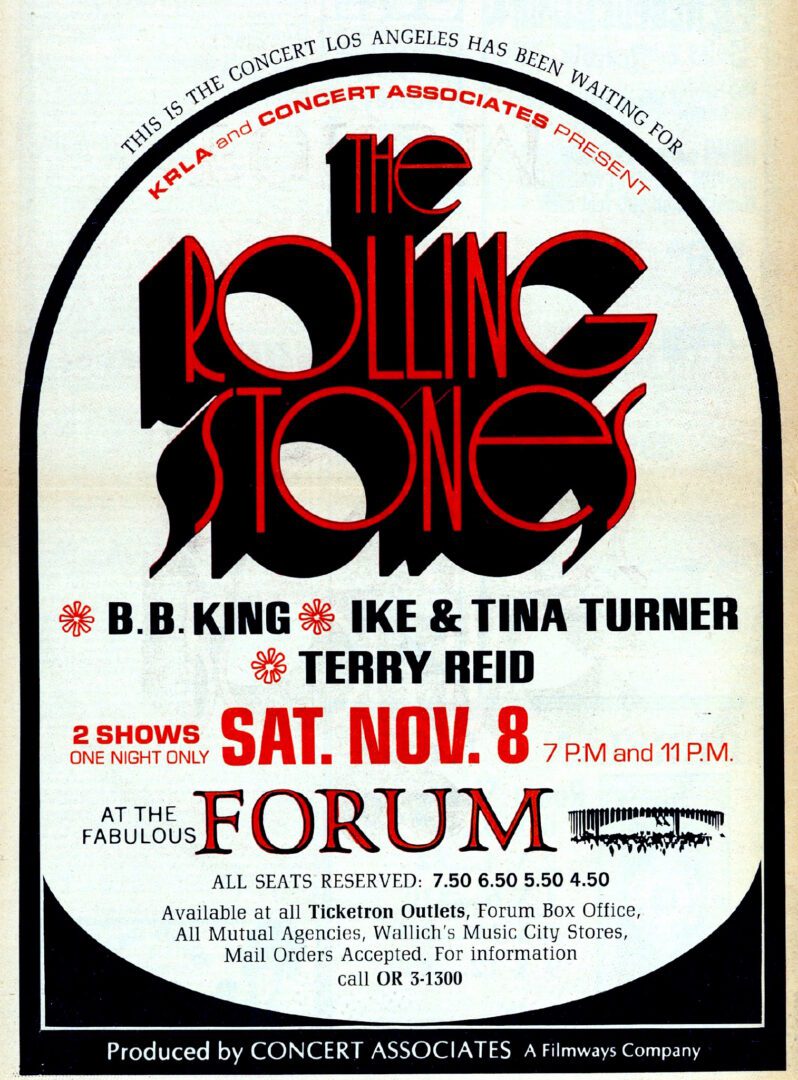
The Stones tour began on November 7th in Ft. Collins Colorado and moved to California for two shows. The tour's second stop, in Inglewood at Southern California’s The (Fabulous) Forum, has achieved mythic status.
In arranging this Forum date, a previously set hockey match between the Los Angeles Kings and the New York Rangers was rescheduled -- at the request of owner Jack Kent Cooke who owned both the Forum venue and the Kings team. The lengthy change over at the facility caused massive delays. The first scheduled show began very late in the evening with Terry Reid opening. The second show didn’t get started until after 2:00 a.m. Due to time constraints, Terry Reid didn’t play the nightcap.
After the Rolling Stones 1969 tour conclusion, the band had organized one more booking on Saturday, December 6th, for a free show that featured the Flying Burrito Brothers, Santana, Jefferson Airplane, and Grateful Dead (who chose not to perform) in a free thank you concert acknowledging their successful 1969 US tour that has always been reported as the disastrous Altamont free concert.
And contrary to popular belief, many people who went to Altamont that afternoon and evening had a good time and left with a sense of wonder and delight.
Take into consideration actor/poet Harry E. Northup, who was at this infamous gig.
The Stones played "Brown Sugar" live on that stage for the first time during the Altamont appearance.
Northup has made a living as an actor for over 30 yeas, acting in 37 films, including Mean Streets, Over the Edge (starring role), Taxi Driver & The Silence of the Lambs. Northup is that rare American actor who is also an accomplished poet with 9 books of poetry published.
“I was working in Hollywood as a waiter at the Old World Restaurant on the Sunset Strip,” emailed Harry.
“My first wife, Rita, & I had arrived in Los Angeles, from New York City on March 5, 1968. That day we got an apartment in Santa Monica & that night. I got a job as a waiter at the Old World. I came to L.A. to work in the movies. I worked at night & auditioned for movie & TV roles in the day. We hung out at the beach & went to every rock 'n roll concert that we could at the Santa Monica Civic, Palladium & Venice Beach.
“Rita & I and our 10-month-old son, Dylan, drove to San Francisco, Ca., on the 5th day of December, 1969, in our blue & white Volkswagen van. It had a bed in the back. We slept in it in the Haight. The morning of the 6th, we ate at Brother Juniper's -- I remember seeing a black man, sitting next to us, with a cross cut into the top of his head -- & then we drove to Altamont. It was slow going when we got near the Speedway. We parked on the side of the road & walked a long way. We took turns carrying Dylan.
“At the concert, we met 5 long-haired surfer guys & 3 girls we knew from Santa Monica. It was a gray day. It seemed like half a million people were there. We had driven up Pacific Coast Highway many times from Santa Monica to see the Grateful Dead, Jefferson Airplane, Janis Joplin, & the Paul Butterfield Blues Band, among others, in Golden Gate Park & other venues, but had never been at a gathering this large.
“Most of the time, we stayed on the perimeter & danced. My wife loved the Stones. She pranced & pointed & sang like Mick. She had seen the Beatles at Shea Stadium years before. (Harvey Keitel, who was my fellow student in Frank Corsaro's Method acting class in Manhattan, had introduced her to me at the one party that I had given in New York City in the five years that I lived there, from 1963-1968. He also introduced me to Martin Scorsese, who hired me to play The Rapist in his first feature, Who's That Knocking At My Door in 1968. Marty hired me to act in his first six features & first TV show. Bette Midler, by the way, sang Bob Dylan's ‘A Hard Rain's Gonna Fall’ at that same party.)
“We shared joints, people gave us food: fruit, juices, sandwiches. Our surfer friends danced, held Dylan. Once, I snaked my way down to the left side of the stage just as the Rolling Stones sang, ‘Jumpin' Jack Flash.’ It was electric. I saw a young woman, who kept trying to climb up onto the stage, & at each attempt, a Hells Angel, who wore a wolf's head kicked her in the face. She must have been a masochist, because she kept going back for more. I headed back to our group. We danced & had a wonderful time. The Stones & Santana were tremendous. We felt renewed.
“It was a long slow journey back to our VW. It wasn't until we were driving south on the 5 Freeway that we heard, on the radio, about the killing at Altamont.
“In 1970, I saw Gimme Shelter, by the Mayles Brothers, which showed the violence in all its vividness. In 1973, I played the Vietnam vet who destroys his own homecoming in Scorsese's first masterpiece, Mean Streets. Scorsese utilized ‘Jumpin' Jack Flash’ on the soundtrack for Johnny Boy's (Robert De Niro) entrance into the bar.”
Gimme Shelter (1970), directed by David and Albert Maysles and Charlotte Zwerin, documented the Stones’ 1969 American tour and took its title from the song. A version of “Gimme Shelter” played over the closing credits.
“In Get Yer Ya-Ya's Out! we have actual audio (and, with the Maysles Brothers' footage, video) documentation for the ages of Rock and Roll becoming Rock, and more crucially the Sixties becoming the Seventies,” writer Gary Pig Gold injects.
“A popular musician's goal could no longer simply be to write and record the perfect three-minute hit. You now had to be able to perform it on stage, along with at least an hour's worth of additional material, in front of attentive, ever-growing arena-sized crowds. No longer could you rely solely on a record producer's control-board tricks, or an arrangement that need only be completely executed once across the nearest four tracks.
“The Rolling Stones, along with scant few other fellow British Invaders, had no problem bridging those decades and environments: They always were a band who made recordings of performances in the studio, and could easily replicate them -- and, as Ya-Ya's amply demonstrates, often ENHANCE them -- on the concert stage.
“That is key to the band's success, not to mention longevity, and with Get Yer Ya-Ya's Out! we can ear-witness the Rolling Stones totally maturing from England's Newest Hit Makers into The World's Greatest Rock and Roll Band.”
(Harvey Kubernik is the author of 20 books, including 2009’s Canyon Of Dreams: The Magic And The Music Of Laurel Canyon, 2014’s Turn Up The Radio! Rock, Pop and Roll In Los Angeles 1956-1972, 2015's Every Body Knows: Leonard Cohen, 2016's Heart of Gold Neil Young and 2017's 1967: A Complete Rock Music History of the Summer of Love. Sterling/Barnes and Noble in 2018 published Harvey and Kenneth Kubernik’s The Story Of The Band: From Big Pink To The Last Waltz. In 2021 the duo wrote Jimi Hendrix: Voodoo Child for Sterling/Barnes and Noble.
Otherworld Cottage Industries in 2020 published Harvey’s Docs That Rock, Music That Matters. His Screen Gems: (Pop Music Documentaries and Rock ‘n’ Roll TV Scenes) is scheduled for December 2025 publication. Harvey wrote the liner notes to CD re-releases of Carole King’s Tapestry, The Essential Carole King, Allen Ginsberg’s Kaddish, Elvis Presley The ’68 Comeback Special, The Ramones’ End of the Century and Big Brother & the Holding Company Captured Live at The Monterey International Pop Festival.
During 2006 Kubernik appeared at the special hearings by The Library of Congress in Hollywood, California, discussing archiving practices and audiotape preservation. In 2017 he lectured at the Rock and Roll Hall of Fame in Cleveland, Ohio, in their Distinguished Speakers Series. Amidst 2023, Harvey spoke at The Grammy Museum in Los Angeles discussing director Martin Scorsese's The Last Waltz music documentary.
Kubernik is in a documentary, The Sound of Protest now airing on the Apple TVOD TV broadcasting service. https://tv.apple.com › us › movie › the-sound-of-protest. Director Siobhan Logue’s endeavor features Smokey Robinson, Hozier, Skin (Skunk Anansie), Two-Tone's Jerry Dammers, Angélique Kidjo, Holly Johnson, David McAlmont, Rhiannon Giddens, and more.
Harvey is interviewed along with Iggy Pop, Bruce Johnston, Johnny Echols, the Bangles' Susanna Hoffs and Victoria Peterson, and the founding members of the Seeds in director Neil Norman’s documentary The Seeds - The Seeds: Pushin' Too Hard now streaming on Vimeo. In November 2025, a DVD/Blu-ray with bonus footage of the documentary will be released via the GNP Crescendo Company.
The New York City Department of Education in 2025 published the social studies textbook Hidden Voices: Jewish Americans in United States History. Kubernik’s 1976 interview with music promoter Bill Graham on the Best Classic Bands website Bill Graham Interview on the Rock ’n’ Roll Revolution, 1976, is included).
